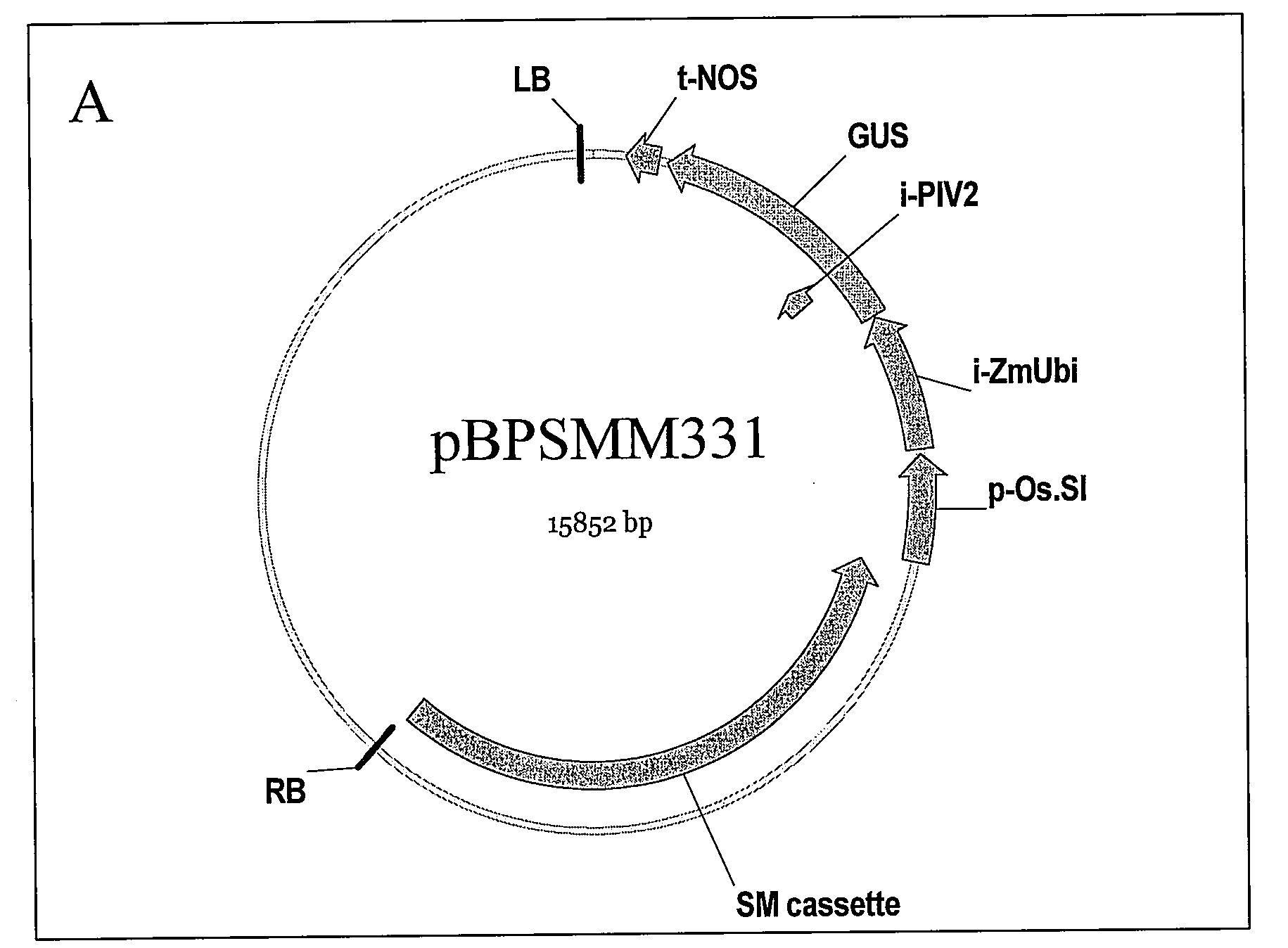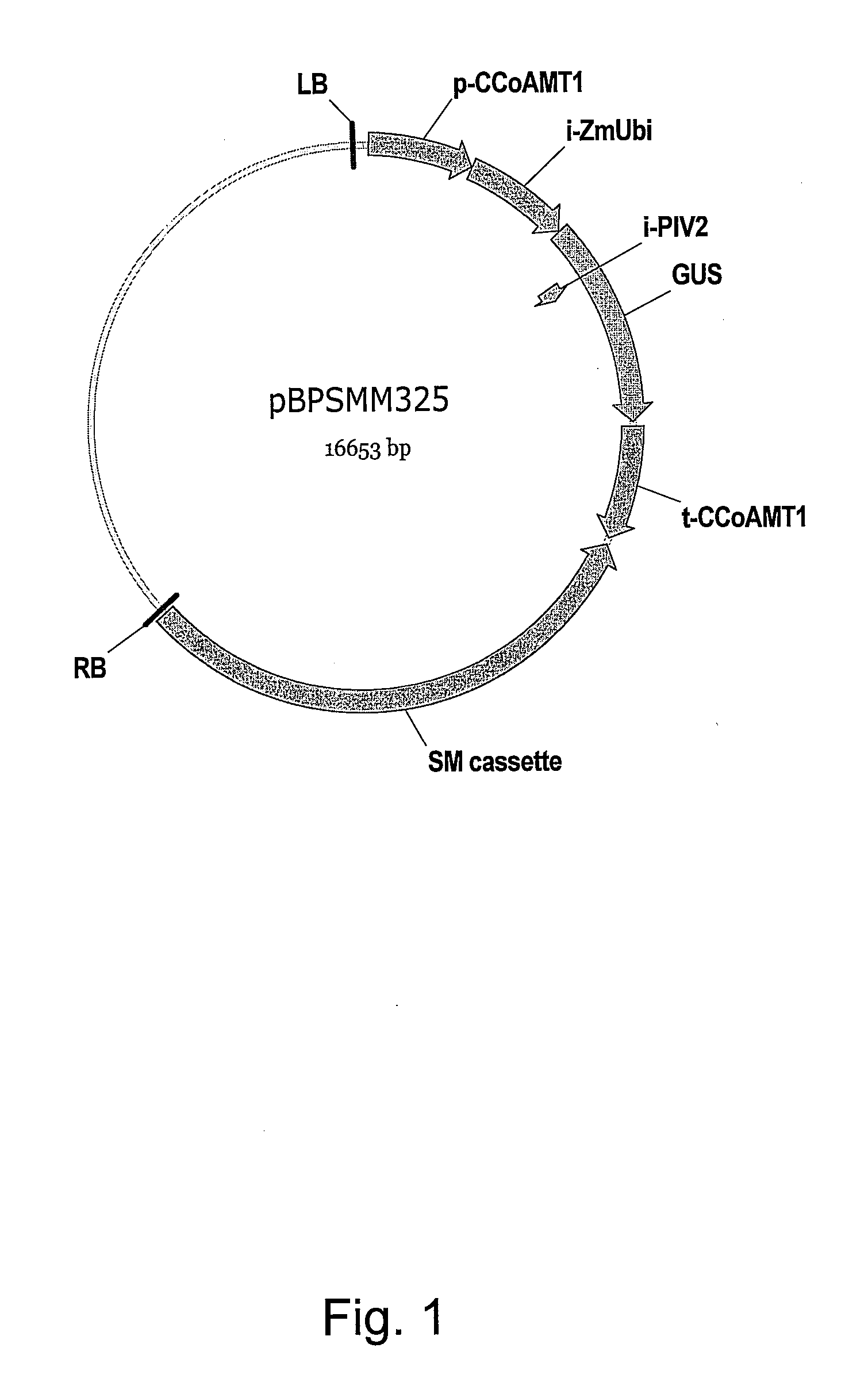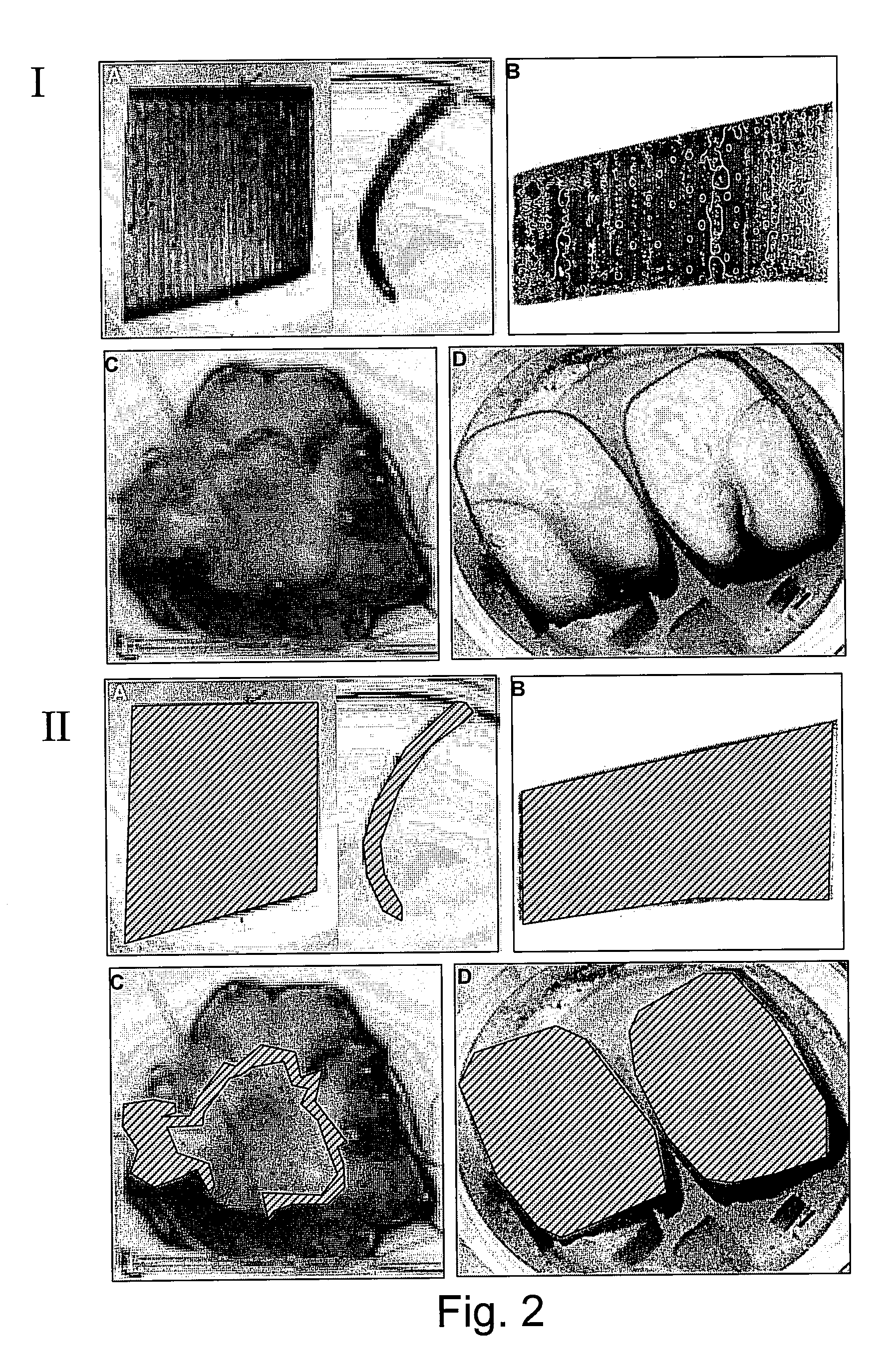Expression Cassettes for Regulation of Expression in Monocotyledonous Plants
- Summary
- Abstract
- Description
- Claims
- Application Information
AI Technical Summary
Benefits of technology
Problems solved by technology
Method used
Image
Examples
example 1
Isolation of Promoters
[0566]Genomic DNA from maize and rice is extracted using the Qiagen DNAeasy Plant Mini Kit (Qiagen). The promoter regions were isolated from genomic DNA using conventional PCR. Approximately 0.1 μg of digested genomic DNA was uses for the regular PCR reaction (see below). The primers were designed based on the maize or rice genomic DNA sequences upstream of the EST candidates, maize genomic sequences, or promoter sequences disclosed in the public database (e.g. rice caffeoyl CoA-O-methyltransferase [CCoAMT1], GenBank accession number AB023482; rice unknown protein, GenBank accession number AP002818; maize hydroxyproline-rich glycoprotein [HRGP], GenBank accession number AJ131535; maize lactate dehydrogenase [LDH], GenBank accession number Z11754). One μL of the diluted digested genomic DNA was used as the DNA template in the primary PCR reaction. The reaction comprised forward (5′) and reverse (3′) primers in a mixture containing Buffer 3 following the protocol...
example 2
Isolation of Terminator of Interest Including the 3′ Untranslated Region
[0569]Rice genomic DNA fragment (1,092 bp) containing the 3′ untranslated region of caffeoyl CoA-O-methyltransferase (Os.CCoAMT1) was isolated using sequence specific primers based on the sequences that disclosed in the public database (GenBank accession number AB023482). The protocols for plant genomic DNA isolation and conventional PCR amplification was described in the Example 1.
Forward Primer OsCCoAMT1 3′UTR-5′:(SEQ ID NO: 42)5′-GCCGATGCCCAAGAACTAGTCATTTTA-3′Reverse primer OsCCoAMT1 3′UTR-3′:(SEQ ID NO: 43)5′-ATTAACACGTCAACCAAACCGCCGTCC-3′
[0570]SacI for the forward primer and PmeI for the reverse primer were added to the sequence-specific primers for the further cloning purpose. (The illustrated primer sequences do not include restriction enzyme sites.)
[0571]Rice genomic DNA fragment, 519 bp or 473 bp, containing the 3′ untranslated region of HRGP or LDH gene was isolated, respectively using sequence specifi...
example 3
Vector Construction
3.1 pUC Based Vector (Promoter of Interest::Intron (IME)::GUS::NOS or Terminator of Interest)
[0573]The base vector to which the intron candidates were cloned in was pBPSMM270 at BglI and XmaI. This vector comprises multiple cloning sites (MCS) followed by Zm.ubiquitin intron, the GUSint ORF (including the potato invertase [PIV]2 intron to prevent bacterial expression), and nopaline synthase (NOS) terminator in order (5′ to 3′). Maize ubiquitin intron can be replaced with an intron of interest that functions in intron-mediated enhancement.
[0574]The PCR fragment containing terminator of interest (e.g. 1,092 bp rice genomic DNA including CCoAMT1 terminator; 558 bp maize genomic DNA including HRGP terminator, 477 bp maize genomic DNA including LDH terminator) was digested with SacI and PmeI enzymes. Nopaline synthase terminator region in pBPSMM270 was replaced with the CCoAMT1 terminator, HRGP terminator or LDH terminator resulting in pBPSMM270a, pBPSMM270-HRGP3′ or p...
PUM
| Property | Measurement | Unit |
|---|---|---|
| Temperature | aaaaa | aaaaa |
| Temperature | aaaaa | aaaaa |
| Fraction | aaaaa | aaaaa |
Abstract
Description
Claims
Application Information
 Login to View More
Login to View More - R&D
- Intellectual Property
- Life Sciences
- Materials
- Tech Scout
- Unparalleled Data Quality
- Higher Quality Content
- 60% Fewer Hallucinations
Browse by: Latest US Patents, China's latest patents, Technical Efficacy Thesaurus, Application Domain, Technology Topic, Popular Technical Reports.
© 2025 PatSnap. All rights reserved.Legal|Privacy policy|Modern Slavery Act Transparency Statement|Sitemap|About US| Contact US: help@patsnap.com



